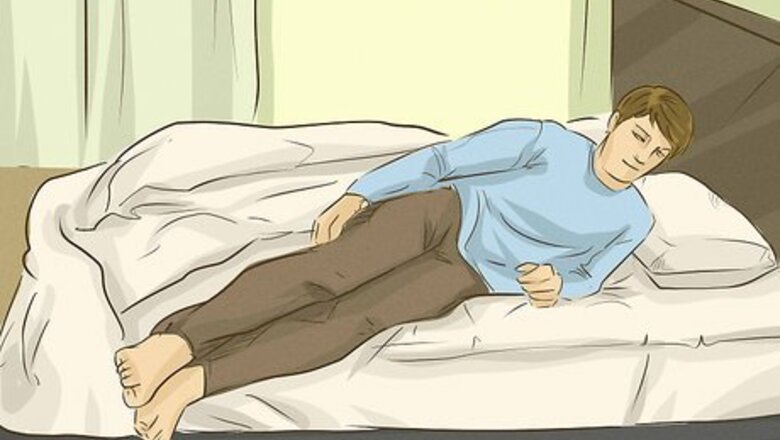
views
Best Sleeping Positions
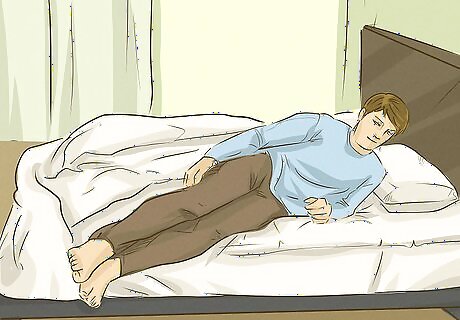
Learn to get in and out of bed properly. You can hurt your lower back by moving improperly into bed. Use the "log roll" whenever you want to lie down. Sit on your side of the bed, approximately where you want your buttocks to lie while you sleep. Lower your torso down onto your left or right side as you bring your legs up. You should stay in a straight plank during this motion. To sleep on your back, roll in a plank motion from your side to your back. To go to your other side, bend the leg that is opposite from the side you want to roll onto. Press that foot down to push yourself onto your side. Learn to always move in a plank motion to avoid wrenching your back.
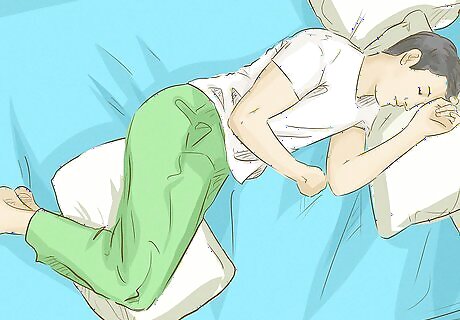
Sleep in the fetal position. Sleeping on your side with your knees drawn up can help relieve lower back pain by allowing the joints in the spine to open up. Place a king-sized pillow or body pillow between your legs when you are on your side. Bend both knees and bring them up to a comfortable position. Avoid curving your spine. Place the pillow so that it fits between your ankles and between your knees at the same time. Using a pillow will help keep your hips, pelvis, and spine aligned and reduce tension. Use a thicker pillow if you’re a side sleeper. Alternate sides. If you’re a side sleeper, alternate which side you sleep on. Sleeping on the same side all the time can cause muscle imbalance or pain. Pregnant people should sleep on their side, not on their backs. Laying on your back can restrict blood flow to the fetus, which can affect the amount of oxygen and nutrients that reach the fetus.
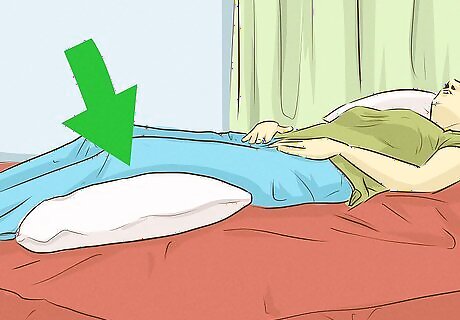
Place a plush, supportive pillow underneath your knees, if you sleep on your back. This action flattens your back, removing a large arch from your lower back region. It can relieve pain in just a few minutes. If you are a back and side sleeper, you can use a supportive pillow and pull it under your knees or between your legs as you switch positions. You can also place a small, rolled-up towel under the small of your back for extra support.
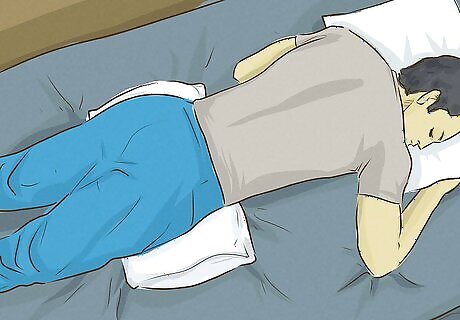
Avoid sleeping on your stomach if you have low back pain. Sleeping on your stomach can place a burden on your lower back and it can create an unpleasant twist in your spine. If you find that this is the only way you can sleep, put a pillow below your pelvis and lower abdomen. Avoid using a pillow for your head if it places your neck or back in a strained position. Some people with lower disc bulges may benefit from stomach-sleeping on a massage table. This effect can be simulated at home by removing your regular pillow and placing an airplane pillow around your head. This keeps your face straight down during the night and prevents the neck twist. You can also place your hands together above your head and put your forehead on top of them.
Adjusting your Bed
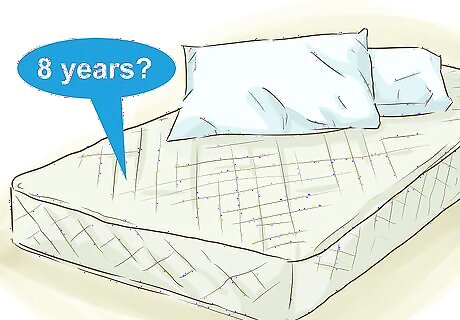
Check if you have had your mattress for more than eight years. If so, it may be time for an upgrade. The materials in a mattress break down over time and become less supportive to your back and body. There is no one type of mattress that is “the best” for people who suffer back pain, so test a few out before you purchase one to discover what’s most comfortable for you. Some people may prefer firm mattresses, while others may prefer soft. A foam mattress may be more comfortable for some than a traditional inner-spring mattress. Choose a mattress store that offers a satisfaction guarantee and a return policy. It can take several weeks to adjust to your new mattress. If your back pain does not improve after several weeks of sleeping on the mattress, you may wish to return it.
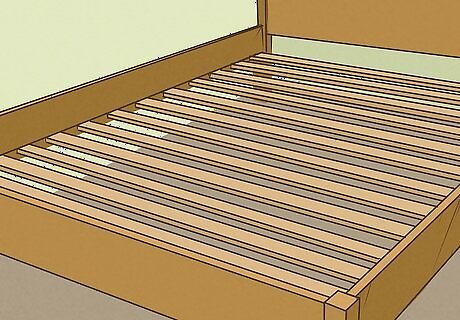
Create a more supportive bed. If you can't afford to buy a new bed right now, you can make your bed more supportive by using plywood slats. Place these between your box spring and mattress. You can also place your mattress directly on the floor. You may find that a memory foam or latex mattress pad also makes your bed more supportive. These are cheaper options than replacing your mattress if you can’t afford the large expense immediately.
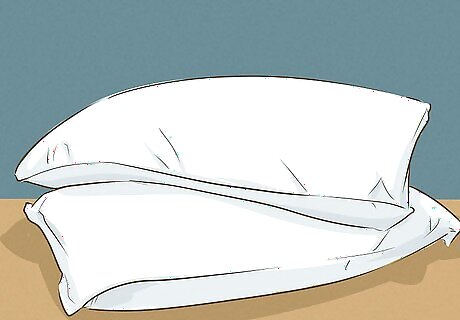
Buy supportive pillows. Shop for a pillow that is tailored to the way you sleep, selecting either a side or back pillow. Consider a body pillow or a king-sized pillow to place between your legs if you're a side-sleeper.
Preparing your Lower Back for Sleep
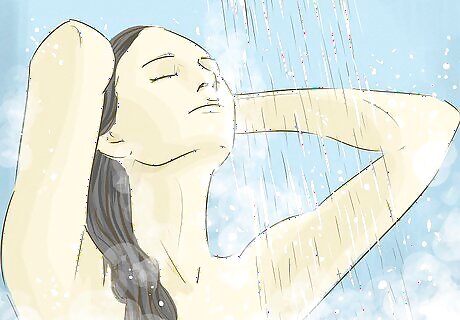
Use heat to relieve low back pain before going to bed. Heat helps your muscles relax, which can relieve lower back pain. Heat is more effective for chronic back pain than ice. Take a short warm shower for 10 minutes before you get into bed. Let the warm water run over your lower back. Alternately, take a hot bath before bed. Use a hot water bottle or heating pad to apply heat to your sore areas. Do not use a hot water bottle or heating pad while sleeping! You could risk burns or even fire. Use heat for about 15 – 20 minutes before you go to sleep.
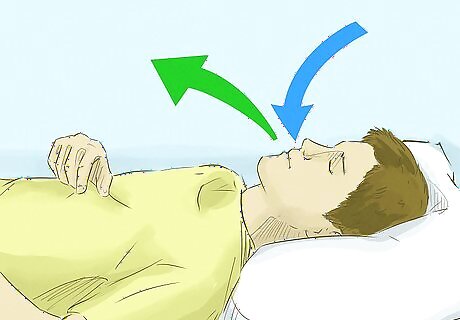
Do deep breathing exercises when you get into bed. Breathe in and out deeply, audibly at first. Visualize each muscle in your body relaxing. Begin by taking some deep breaths. Close your eyes and notice the rhythms of your breathing. Imagine yourself in a place where you feel relaxed and calm. This could be at the beach, in a forest, or even in your own room. Notice as many sensory details as you can about this place. Use all of your senses — sight, hearing, touch, taste, smell — to imagine what it is like to be in this relaxing place. Spend a few minutes in this relaxing place before you drift off to sleep. You can also listen to a guided sleep meditation downloaded to your smartphone or played from your computer.
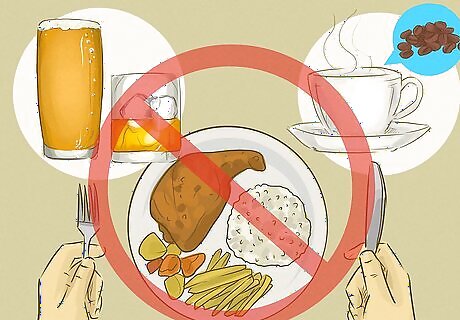
Avoid large meals, alcohol and caffeine before bed. Eating a large meal near bedtime can cause acid reflux and may keep you awake. A light snack such as a piece of toast may help you stay asleep if you tend to wake up hungry in the middle of the night. Limit your overall alcohol consumption. Do not have more than one drink per day for women or two drinks per day for men. Drinking alcohol before bed may help you fall asleep, but it interferes with REM sleep, which is necessary for waking up feeling rested and refreshed. Try to avoid drinking caffeine within six hours of your bedtime. It can disrupt your sleep.
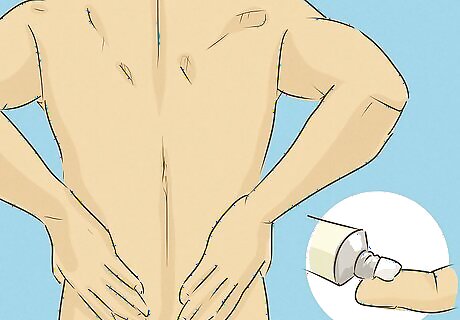
Put an analgesic rub on your lower back before going to bed. Sold in sports stores and drugstores, these rubs can create a pleasant sensation of warmth and relaxation in your muscles.
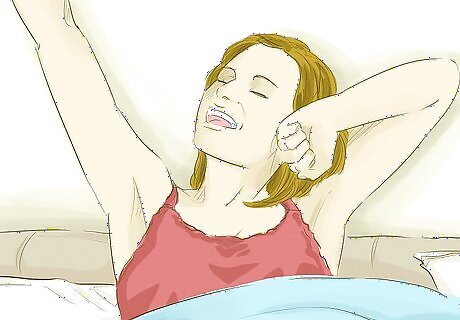
Don't stay in bed too long. Prolonged bed rest can create muscle stiffness and increase back pain. Unless otherwise recommended by your doctor, don’t stay in bed for too long. It's important to get up and move around as soon as you can. Getting up even once every few hours in the beginning will be beneficial. Too much bed rest after an acute injury will weaken the muscles and prolong the time it takes to improve and heal. Always consult with your doctor before returning to your normal physical activities. You could re-injure yourself if you try to do too much too soon.
Seeking Further Help
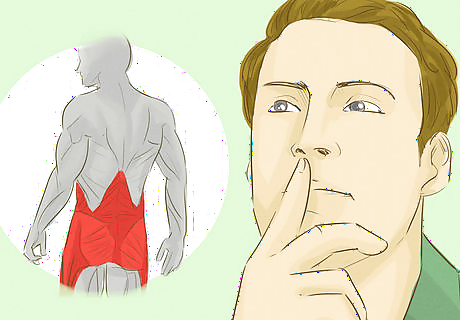
Try different combinations of these techniques. It may take you a few weeks of experimenting to find the ideal combination of techniques that work for you.
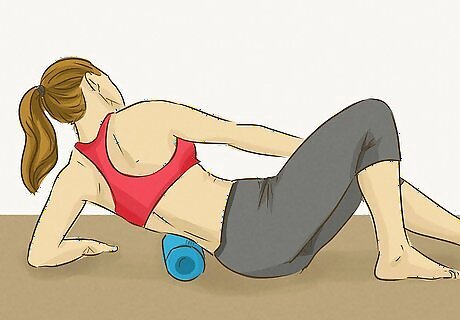
Try other pain relief strategies. If your back pain does not appear to get better, trying other strategies to relieve your back pain throughout the day may help. Don’t try to lift objects that are too heavy. Lift from the knees, pull the stomach muscles in, and keep the head down and in line with a straight back. When lifting, keep objects close to the body. Do not twist when lifting. Use a foam roller to help relieve muscle pain. These look like thick pool noodles. You lie on a flat surface and roll the foam roller beneath your back. Care must be taken when using a foam roller directly on the low back. Make sure you angle your body slightly to the side, which prevents a hyperextension of the low back. Over time, this can jam the joints and cause pain. Leaning slightly to the side can help reduce this discomfort and risk. Set up an ergonomically correct workstation. Make sure you have proper lumbar support while sitting. A chair with good lumbar support can help you avoid low back pain from prolonged sitting. Get up and stretch every hour or so. EXPERT TIP Eric Christensen, DPT Eric Christensen, DPT Physical Therapist Eric Christensen is a Physical Therapist based in Chandler, Arizona. With over a decade of experience, Eric works in both orthopedic and neurological fields and specializes in custom orthotic prescription and casting, vestibular reprogramming, and manual therapy. He holds a Bachelor’s degree in Exercise Science with a focus in Sports Medicine from Colorado State University and a Doctor of Physical Therapy from Regis University. In practice, Eric takes a developmental approach to rehabilitation utilizing the Selective Functional Movement Assessment. He uses functional movement patterning and manual therapy to return patients to prior levels of function. Eric Christensen, DPT Eric Christensen, DPT Physical Therapist Try a gentle windshield wiper stretch. The windshield wiper move stretches out stiff lower backs. Just lie flat with knees bent and feet together, then let both knees slowly sweep from side to side, like a wiper going across a windshield. It's easy!
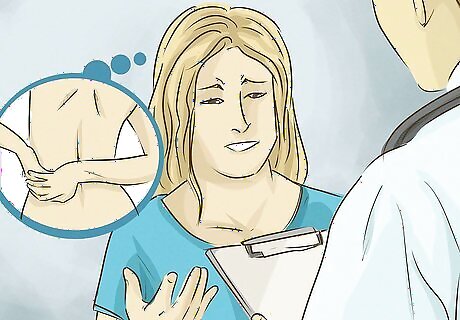
See a doctor. Acute back pain should improve on its own with proper self-care techniques. If your back pain does not improve after four weeks, you should see a doctor. You may have a more serious condition that requires additional treatment. Common causes of lower back pain include arthritis, degenerative disc disease, and other nerve and muscular problems. Appendicitis, kidney diseases, pelvic infections, and ovarian disorders may also cause pain in your lower back.
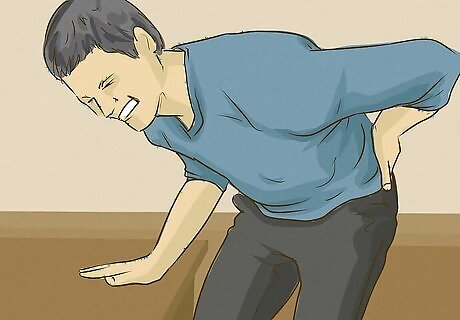
Recognize severe symptoms. Lower back pain is common, affecting around 84% of adults at some point in their lives. However, certain symptoms are signs of a more severe condition. If you experience any of the following symptoms, seek medical treatment right away: Pain extending from your back down the leg Pain that gets worse when you bend over or bend your legs Pain that gets worse at night Fever with back pain Back pain with bladder or bowel trouble Back pain with numbness or weakness in the legs



















Comments
0 comment